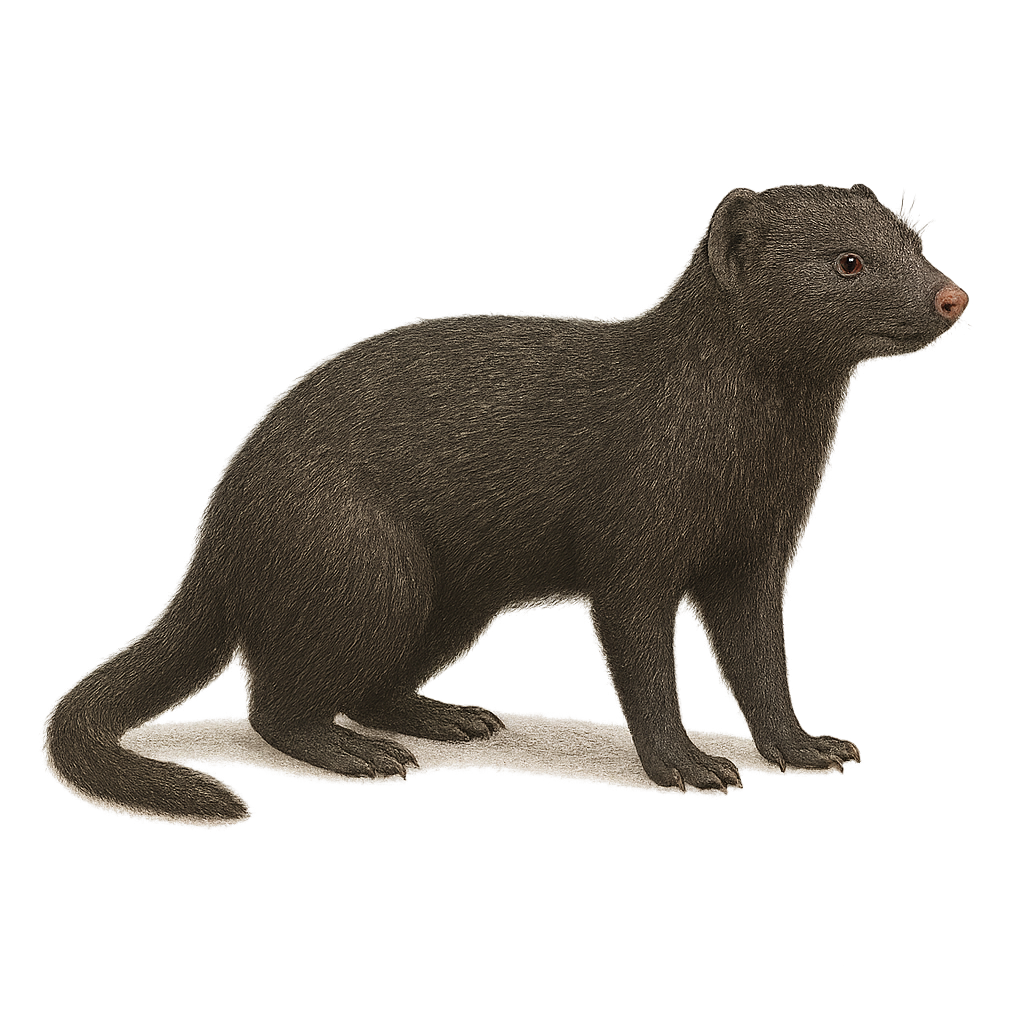Your wildlife photography guide.
Explore the bushy-tailed mongoose in detail, study its behavior, prepare your shots.
Where to observe and photograph the bushy-tailed mongoose in the wild
Learn where and when to spot the bushy-tailed mongoose in the wild, how to identify the species based on distinctive features, and what natural environments it inhabits. The WildlifePhotographer app offers tailored photography tips that reflect the bushy-tailed mongoose’s behavior, helping you capture better wildlife images. Explore the full species profile for key information including description, habitat, active periods, and approach techniques.
Bushy-tailed mongoose
Scientific name: Bdeogale crassicauda

IUCN Status: Least Concern
Family: HERPESTIDAE
Group: Mammals
Sensitivity to human approach: Suspicious
Minimum approach distance: 10 m
Rut period: March to April
Gestation: 60-70 jours
Births: June to July
Habitat:
tropical forests, savannas, wooded areas
Activity period :
Mainly active at night, generally discreet during the day.
Identification and description:
The bushy-tailed mongoose, or Bdeogale crassicauda, is a small African carnivore belonging to the Herpestidae family. It is characterized by its bushy tail and grayish-brown fur. Primarily nocturnal, it feeds on insects, small vertebrates, and fruits. It inhabits tropical forests, savannas, and wooded areas in East Africa. Although elusive, it is sometimes seen in small family groups. Its ability to adapt to various habitats allows it to survive in changing environments. However, deforestation and habitat loss pose potential threats to its population.
Recommended lens:
400 mm – adjust based on distance, desired framing (portrait or habitat), and approach conditions.
Photography tips:
To photograph the bushy-tailed mongoose, focus on twilight or nighttime hours, as it is primarily active at night. Use a telephoto lens of at least 400mm to capture detailed images from a distance without disturbing the animal. Be patient and discreet, as this mongoose is suspicious. Target areas near tropical forests or savannas where it is likely to forage. A tripod can be helpful to stabilize your camera in low-light conditions.
The WildlifePhotographer App is coming soon!
Be the first to explore the best nature spots, track rutting seasons, log your observations, and observe more wildlife.
Already 1 431 wildlife lovers subscribed worldwide

